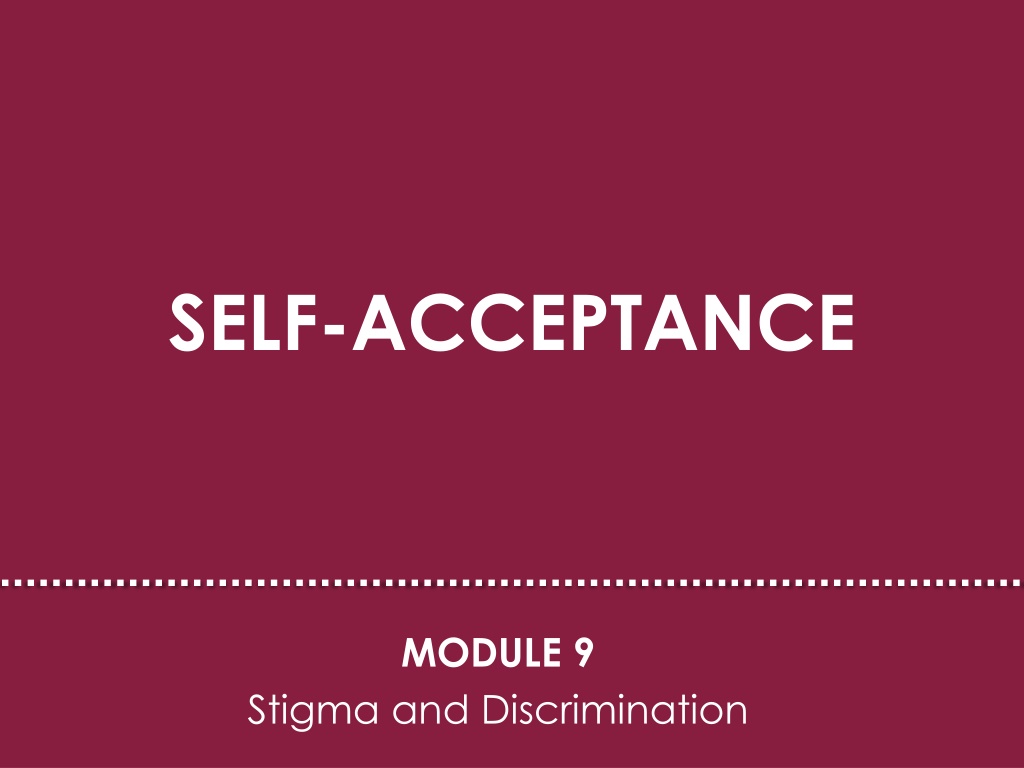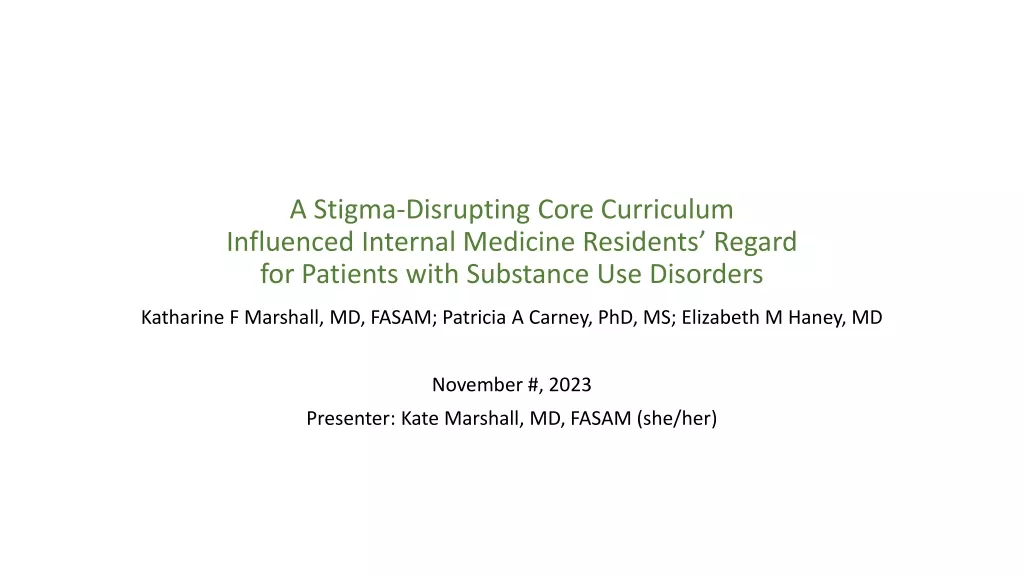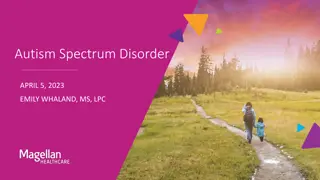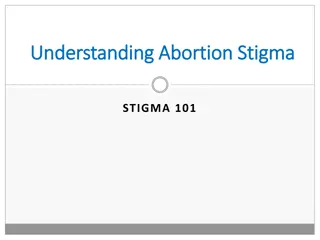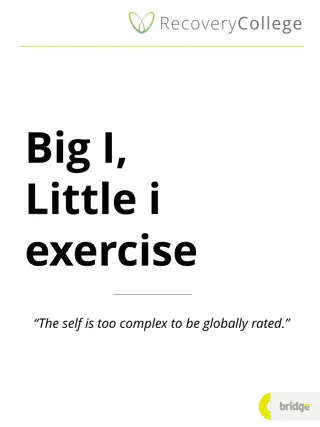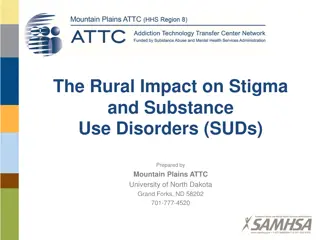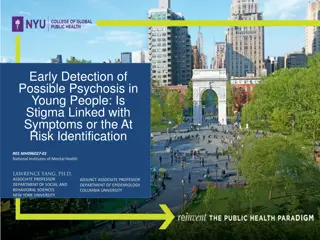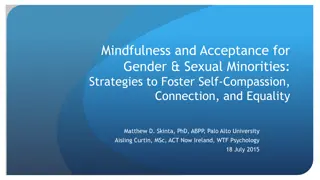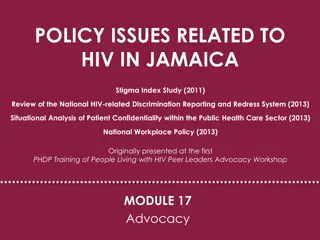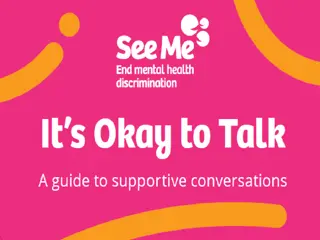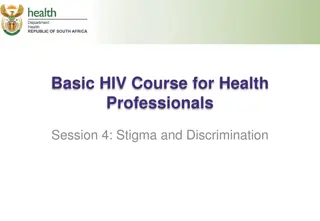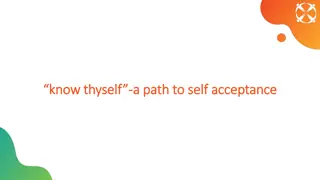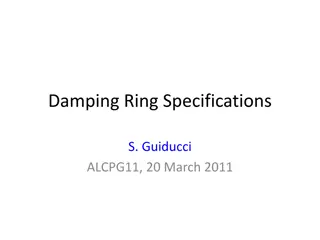Self-Acceptance and Overcoming Stigma
Self-esteem and self-acceptance are distinct concepts, with self-acceptance focusing on embracing all facets of oneself unconditionally. Developing self-acceptance involves stages like aversion, curiosity, tolerance, and allowing. Overcoming avoidance and resistance can lead to self-compassion and growth.
Download Presentation

Please find below an Image/Link to download the presentation.
The content on the website is provided AS IS for your information and personal use only. It may not be sold, licensed, or shared on other websites without obtaining consent from the author.If you encounter any issues during the download, it is possible that the publisher has removed the file from their server.
You are allowed to download the files provided on this website for personal or commercial use, subject to the condition that they are used lawfully. All files are the property of their respective owners.
The content on the website is provided AS IS for your information and personal use only. It may not be sold, licensed, or shared on other websites without obtaining consent from the author.
E N D
Presentation Transcript
SELF-ACCEPTANCE MODULE 9 Stigma and Discrimination
Self-esteem vs. Self-acceptance Self-esteem refers to how highly a person thinks of themself. Self-esteem usually results from people s efforts to bolster their image of themselves through accomplishments and achievements but when things don t go as planned, self-esteem takes a hit from which it can be difficult to recover. Source: Becker-Phelps, L. Self-Acceptance: More Substance than Self-Esteem. Psychology Today, November 10, 2010. Available at: https://www.psychologytoday.com/blog/making-change/201011/self-acceptance-more- substance-self-esteem.
Self-esteem vs. Self-acceptance 2 Self-acceptance does not rely on achievements to build a person up. When we are self-accepting, we re able to embrace ALL facets of ourselves not just the positive more esteem-able parts. As such, self-acceptance is unconditional, free of any qualification. We can recognize our weaknesses and limitations but this awareness in no way interferes with our ability to fully accept ourselves. Source: Seltzer, L.F. The Path to Unconditional Self-Acceptance. Psychology Today, September 10, 2008. Available at: https://www.psychologytoday.com/blog/evolution-the-self/200809/the-path-unconditional-self- acceptance.
Developing Self-acceptance Psychologist Christopher Germer proposes that the development of self-acceptance occurs in five stages: 1. Aversion 2. Curiosity 3. Tolerance 4. Allowing 5. Friendship Source: Germer, C.K. 2009. The Mindful Path to Self-Compassion: Freeing Yourself from Destructive Thoughts and Emotions. New York: The Guilford Press.
Stage 1: Aversion People instinctively respond to uncomfortable feelings with resistance and avoidance. Example: Janet, a mother whose nine-year-old son died, became so overwhelmed with grief that she generally stayed in bed. When she did go out, she would observe people in a detached way, feeling like a stranger.
Stage 2: Curiosity When aversion doesn t work, people become curious about their problem. They want to learn more about it, even though they feel anxious. Example: Janet s grief became so overwhelming that she wished she could die. Then, she questioned what would happen to her surviving daughter and realised that she had to choose between giving in to her emotions and finding a way through.
Stage 3: Tolerance People at this stage endure their pain while still wishing it would disappear. Example: Once Janet decided she needed to live for the sake of her daughter, she found a way to tolerate her grief enough to function as a mother.
Stage 4: Allowing People begin to allow their feelings to come and go. Rather than just tolerating feelings that overpower them, they openly let their feelings flow. Example: With time, Janet realised that she felt close to her son whenever she felt her grief. She also felt close to him at times when she was grateful for having known him. As she allowed for her different emotions, she was able to have a healthy relationship with (feel love for) her deceased son.
Stage 5: Friendship People in this stage not only allow their feelings, but they actually see value in them. It s not that they want to feel upset, but they can be grateful for the benefits that their situation and its related emotions bring to their life.
Stage 5: Friendship (contd) Example: Many years later, Janet became aware that she was not willing to get in touch with her grief. She realised that she could not fully enjoy the positive moments in life as long as she remained distant from the negative ones. As a result, she began to befriend her grief, allowing her to love fully without the fear of hurting.
